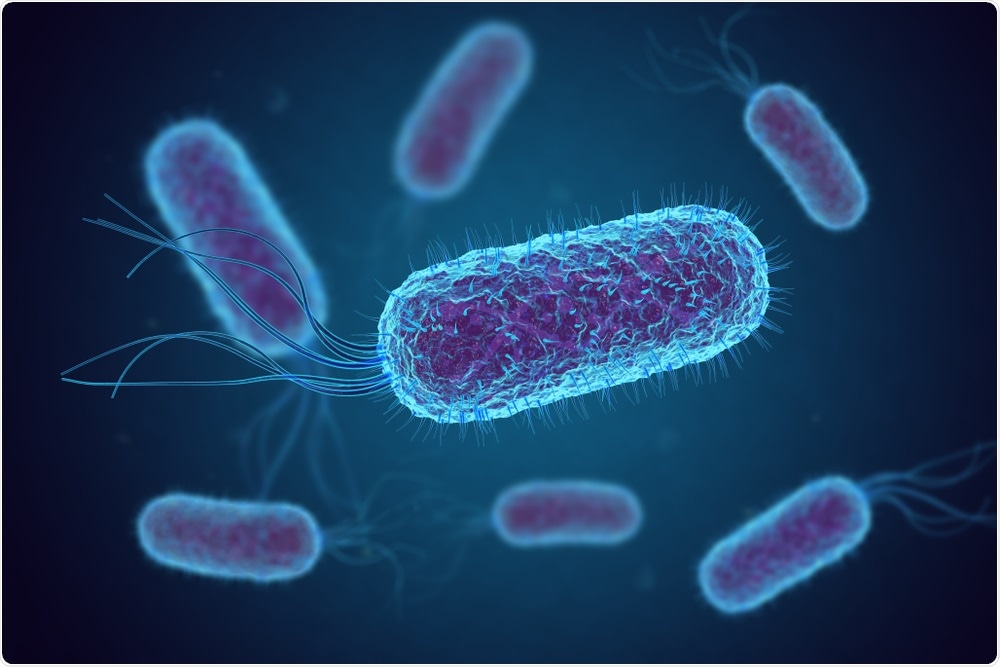A recent Science paper discusses the utilization of a previously reported synthetic Escherichia coli to produce virus-resistant synthetic polymers for future drug production applications.
An overview of proteins and polymers
By definition, a polymer is any type of substance that consists of a large number of similar units that are bonded together. Biological polymers, for example, are comprised of at least 50 smaller molecules known as monomers, which are used to create larger polymers that are referred to as macromolecules. These macromolecules, such as carbohydrates, lipids, and proteins, are all essential for maintaining homeostasis in living organisms.
The genetic material of deoxyribonucleic acid (DNA) is a type of biological polymer that is made up of four nucleic acid bases known as guanine (G), adenine (A), thymine (T), and cytosine (C). These nucleic acids are organized into different codons, which are trinucleotide sequences of DNA that correspond to a specific amino acid, which are the building blocks for proteins.
Overall, there are 64 possible combinations of nucleic acids that can arise, with 20 different amino acids that these codon combinations can encode for. Several synonymous codon choices are therefore available to encode different codons for the same amino acids. These synonymous substitutions play an important role in contributing to the diversity of nature; however, they can also cause detrimental effects to the organisms when the substitution is incorrect.

E.Coli. Image Credit: fusebulb/Shutterstock.com
Rewriting the genome
In a 2019 Nature study, a group of scientists from the Medical Research Council (MRC) Library for Molecular Biology in Cambridge, United Kingdom created a variant of Escherichia coli whose entire genome was synthesized through a high-fidelity convergent total synthesis process that utilized four megabases.
More specifically, every TCG and TCA codon was replaced with its synonyms of AGC and AGT. Additionally, every ‘stop’ codon of TAG, which is typically used to signal the termination of the translation process for the current protein, was replaced with its synonym of TAA. Despite not having its original TCG, TCA, and TGA codons within their genome, the synthetic E. coli was still able to create proteins to support its survival and growth.
Synthetic E. coli is resistant to viral infections
Taking their research one step further, the MRC scientists led by Dr. Jason Chin assessed what would happen to the synthetic E. coli upon the removal of the transfer ribonucleic acid (tRNA). These tRNAs are responsible for decoding a messenger RNA (mRNA) sequence that normally recognizes the TCG and TCA codons into proteins.
Upon exposure of the synthetic bacteria to a cocktail of viruses, the bacteria that did not undergo this tRNA modification were immediately killed. Comparatively, the modified bacteria were found to survive as a result of their inherent resistance to the viral infection.
If a virus gets into the vats of bacteria used to manufacture certain drugs, then it can destroy the whole batch. Our modified bacterial cells could overcome this problem by being completely resistant to viruses. Because viruses use the full genetic code, the modified bacteria will not be able to read the viral genes,”
Jason Chin
Utilizing the synthetic E. coli for synthetic polymer production
The discovery that their synthetic E. coli did not require certain codons to be present to continue their survival, growth, and resistance to viral infection led the researchers to investigate how these codons could be used for polymer production.
To this end, the bacteria was used to produce tRNAs coupled with artificial monomers that only recognized the newly available TCG and TAG codons. Strings of TCG and TAG codons were then incorporated into the DNA of the virus-resistant E. coli, which were read by altered tRNAs. The tRNAs then assembled different orders of TCG and TAG codons.
Through this approach, a. total of eight novel polymers that do not exist in nature were constructed. The ends of these polymers were then joined together to create macrocycles, which are molecules that are widely used to form the basis of certain pharmaceutical agents, such as antibiotics and antineoplastic drugs.
The viral resistance of this synthetic bacteria provides a new opportunity for the manufacturing of certain drugs like insulin as well as protein subunit vaccines, as these drugs are often manufactured in cultured bacteria cells that contain the instructions needed for their production.
Source:
- Fredens, J., Wang, K., de la Torre, D., et al. (2019). Total synthesis of Escherichia coli with a recoded genome. Nature 569; 514-518. doi:10.1038/s41586-019-1192-5.
Journal reference:
- Robertson, W., et al. (2021). Sense codon reassignment enables viral resistance and encoded polymer synthesis. Science. doi:10.1126/science.abg3029.